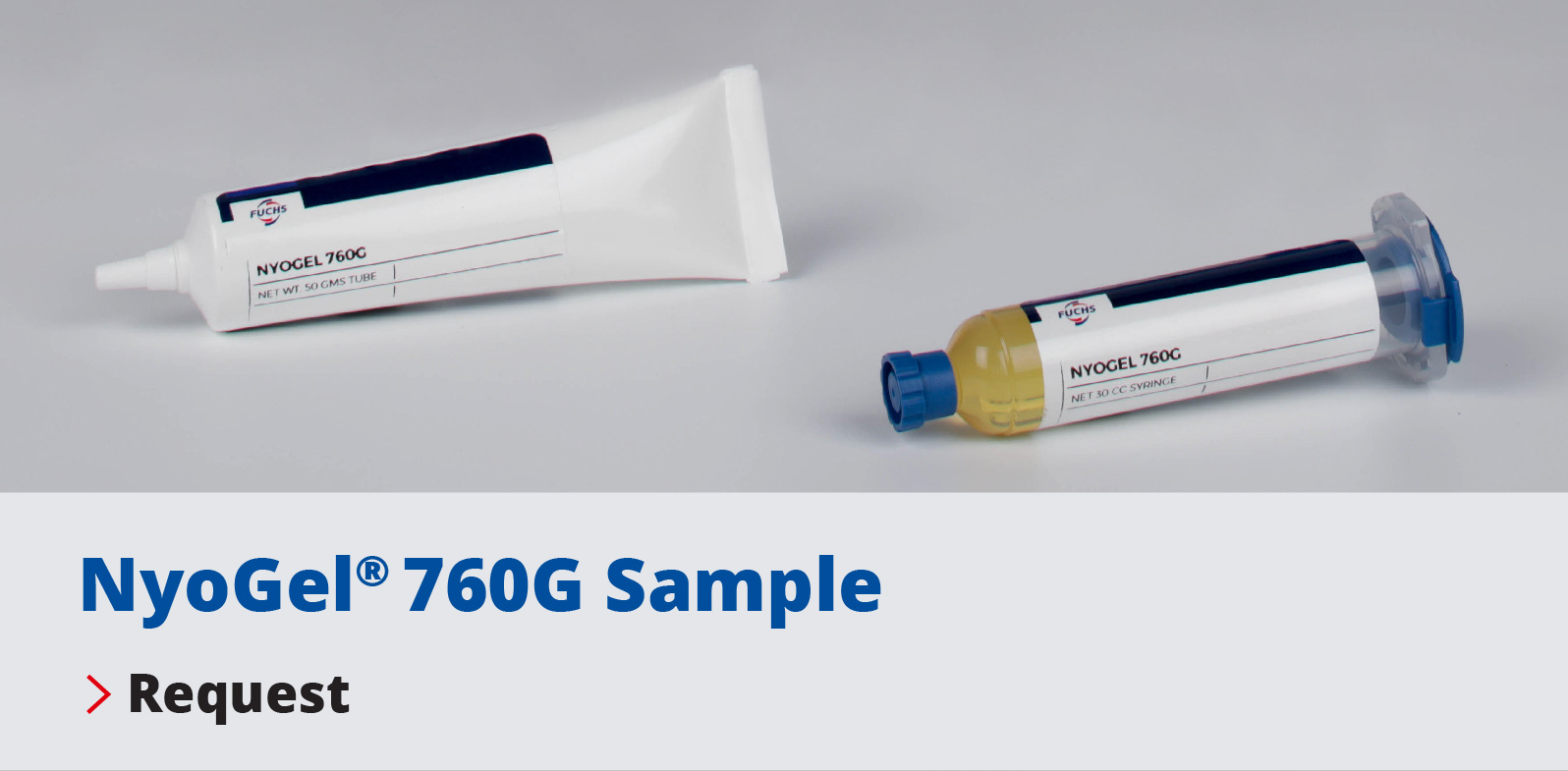Connectors
The number of electrical connectors and electronic circuits in devices such as cars, planes, appliances, industrial machinery, trucks or boats is continuously growing. Failure of these components, from short circuit to continuity loss, present a major concern as issues can vary from nuisance to increased warranty costs to critical safety problems.

The constant exposure to moisture, corrosive environments, and vibration can also accelerate the failure or malfunction of a variety of electrical components including:
- Connectors
- Printed Circuit Boards
- Battery Terminals
- USB Connectors
A thin layer of Nye’s connector grease protects connectors against common causes of electrical failure.
A thin film of lubricant can reduce mating force by as much as 80 percent, an important factor in connector assembly. For electronic connectors with dozens or even hundreds of pins, or for automotive connectors that are in hard-to-reach places, a low insertion force makes assembly more efficient and ensures solid connections. For gold-plated connectors, an effective lubricant, like our industry standard NyoGel® 760G reduces the potential for noble metal wear during mating and separation.
A lubricant acts as a back-up environmental seal from corrosion. Lubricants seal contact metals from oxygen, debris, aggressive chemicals and other hostile elements. Lubricants guard against oxidation and the effects of harsh environments. With gold-plated connectors this means protection against substrate corrosion. Thin gold plating can be microscopically porous; and a thin film of lubricant can seal the pores, prevent substrate attack and assure low contact resistance.
In addition to atmospheric corrosion, tin/lead connectors are also subject to “fretting corrosion,” the result of low amplitude vibration caused by thermal expansion and contraction or nearby motion, as from fans, motors or merely opening and closing a cabinet door. Fretting corrosion continually exposes fresh layers of metal surface to oxidation. A lubricant film minimizes metal-to-metal contact during vibration, protecting the connector from metal wear.
When connectors are not properly protected against moisture and water intrusion, the contact surface can corrode over time or even cause an instantaneous short circuit. Connector grease repels water from the connector surface. Because it is hydrophobic, connector grease stays in place rather than being washed away over time. Additionally, connector grease also prevents current leakage in conductive environments such as water to ensure consistent connectivity.
Nye’s Connector Lubricants
Our family of dielectric greases are compatible with the widest range of connector materials and designed for long-life and performance in high temperature and severe environments. All of Nye’s connector greases are suitable for high and low current designs. Additionally, most of our connector greases can be fortified with a UV tracer for added visibility during application and inspection
Nye Lubricants has a complete line of dielectric greases designed specifically to address application requirements for contact protection, insertion force, sealing, temperature limits and material compatibility. Our most popular connector greases are NyoGel® 760G, Rheotemp™ 768G, and Uniflor™ 8917.
|
Properties |
|||
|
Temperature Range |
-40 to 135 °C |
-40 to 175 °C |
-70 to 225 °C |
|
Base Oil |
PAO |
PAO/AN |
PFPE |
|
Fretting Wear Protection |
Good |
Good |
Excellent |
|
Dielectric Performance |
Good |
Good |
Good |
|
Insertion Force Reduction |
Excellent |
Excellent |
Excellent |
|
Water Resistance |
Excellent |
Good |
Poor |
|
Plastic Compatible |
Yes |
Yes |
Yes |
|
Tin Compatible |
Yes |
Yes |
Yes |
|
Noble Metal Compatible |
Yes |
Yes |
Yes |
Learn More
We can work directly with your design engineers to form a partnership and assist with proper grease selection to ensure performance, avoid warranty claims and costly recalls. Contact an Engineer to learn more.


